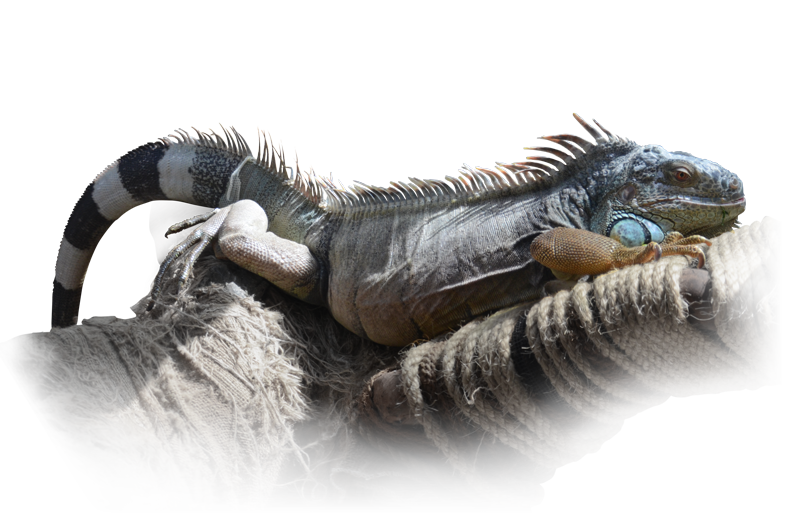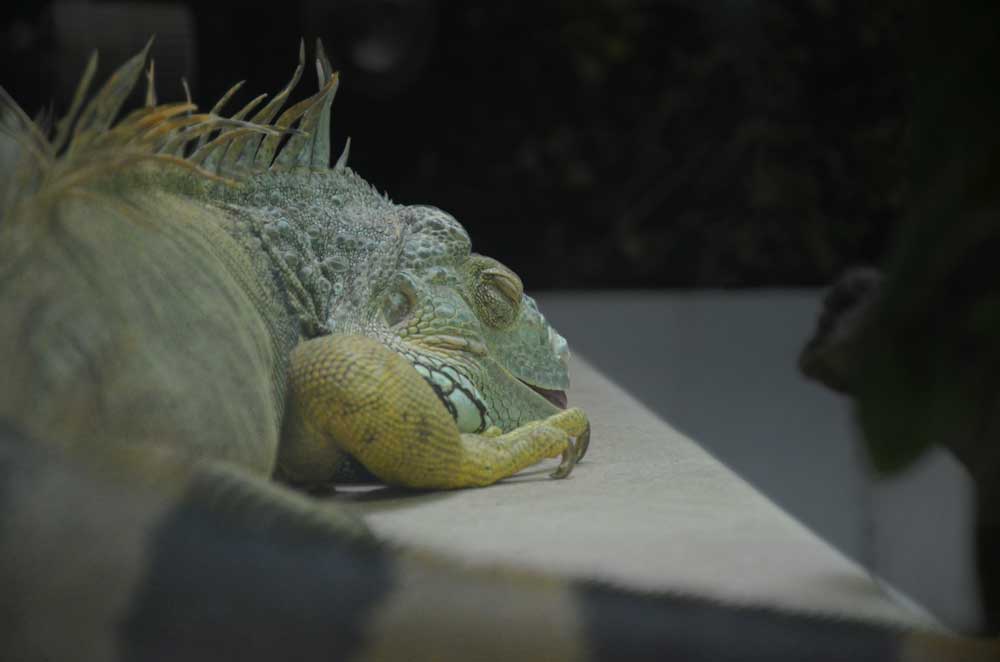
Iguana iguana (Linnaeus, 1758)
日本にも生息?新大陸最大のトカゲ
Does it live in Japan? The largest lizard in the New World
最大で体長2m、体重5kgになります。メキシコ南部から中央アメリカ、ブラジル、パラグアイにかけて広く分布する新大陸最大のトカゲです。
幼体は鮮やかな緑色、成長するにつれて色が薄くなり、灰黄色に近くなります。樹上性で森林の上層部(冠林)に生息しますが、意外なことに泳ぎも得意で動きも俊敏です。頰のところには丸くて大きな鱗がありますが、これは鼓膜下大型鱗(こまくかおおがたりん)と呼ばれるもので天敵から身を守るための威嚇の役目があると考えられています。まるで大きな目のようでとても目立ちます。
イグアナ類は現在45種います。グリーンイグアナの学名は「Iguana iguana」であり、生息数が最も多くイグアナの代表種です。ペットとしての流通量も多いのですが、成長が早くわずか3年で2m近くに成長するため、飼いきれなくなって捨てられて社会問題化しています。石垣島では捨てられたグリーンイグアナが野生化し繁殖しており、従来の生態系に影響を及ぼす懸念が出てきています。

They can grow to a maximum length of 2 meters and weigh 5 kg. They are the largest lizard in the New World, found widely from southern Mexico to Central America, Brazil, and Paraguay.
Juveniles are bright green, but as they grow, their color fades to a grayish-yellow color. They are arboreal and live in the upper reaches of forests (canopy forests), but surprisingly, they are also excellent swimmers and are very agile. They have large, round scales on their cheeks called subtympanic scales, which are thought to serve as a deterrent against predators. They resemble large eyes and are very conspicuous.
There are currently 45 species of iguanas. The scientific name of the green iguana is Iguana iguana, and it is the most populous and representative iguana species. They are widely sold as pets, but their rapid growth—growing to nearly 2 meters in just three years—has led to their abandonment by people unable to keep them. This has become a social problem. Abandoned green iguanas have become wild and are breeding on Ishigaki Island, raising concerns that they may be affecting the island’s ecosystem.
参考文献
ナショナルジオグラフィック | 動物大図鑑 | グリーンイグアナ | (2014年12月1日) 2024年10月14日閲覧
国立環境研究所 | 侵入生物データベース | グリーンイグアナ 2024年10月14日閲覧
大阪ECO動物海洋専門学校 | 動物飼育ブログ | グリーンイグアナってええなぁ。 | (2019年6月6日) 2024年10月14日閲覧
飼育情報 | エキゾチックアニマル情報室 | グリーンイグアナの品種(緑色じゃないのもいる) | (2024年3月27日) 2024年10月14日閲覧
WWFジャパン | 野生のイグアナを危機に追いやる過剰なペット利用 | (2022年4月27日) 2024年10月14日閲覧
環境省 | 報道発表資料 | 報道発表:石垣市崎枝での要注意外来生物グリーンイグアナの捕獲について | (2013年2月26日) 2024年10月14日閲覧